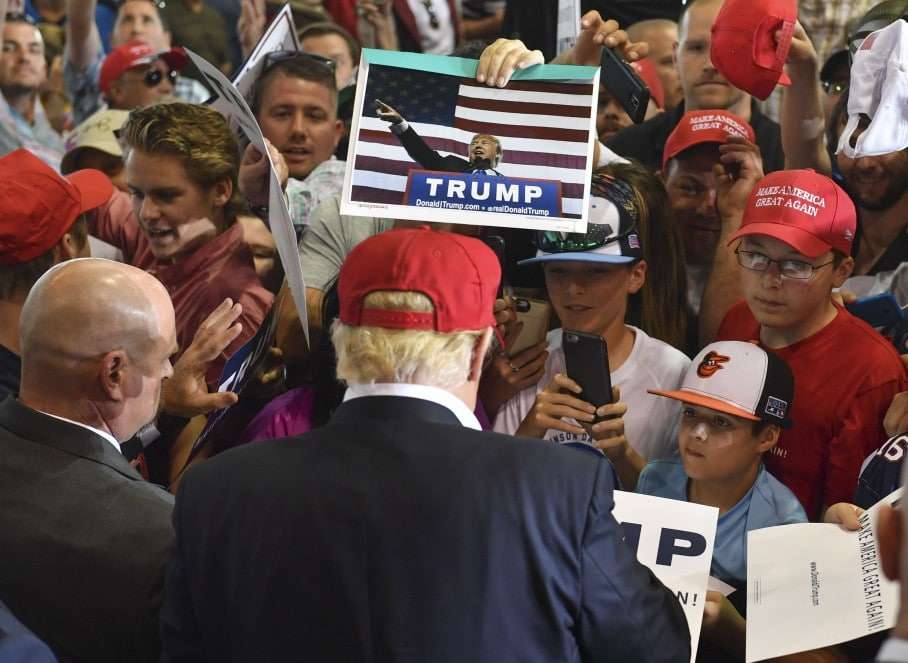The Volokh Conspiracy
Mostly law professors | Sometimes contrarian | Often libertarian | Always independent
Congress must act now on Section 4 of the 20th Amendment

I'd like to thank Eugene for this opportunity to guest-blog here about my forthcoming article in the Harvard Journal on Legislation, "Don't Kill the Candidate: Remedying Congress's Failure to Use Section 4 of the Twentieth Amendment."
It is rare that the Electoral College fails to pick a winner and the presidential election is thrown to the House of Representatives. This year, however, the deep rifts in the Republican Party have made the chances greater than at any time since 1992. The rules for presidential elections thrown to the House (so-called contingent elections) have many flaws, but I will focus on just one. It is obscure and morbid, but startling and potentially momentous: If one of the candidates dies, there is no way to replace him or her.
This is a concern not just because of the record-breaking ages of candidates Donald Trump, Hillary Clinton and Bernie Sanders (on Election Day, Trump and Sanders would be older than President Reagan when he was first elected, Hillary less than a year younger), but also because it gives assassins a uniquely powerful incentive to strike.
Everywhere else in the process, presidents and presidential candidates who die can be replaced by somebody like-minded. If presidents or presidents-elect die, their running mates, not their opponents, step in. If candidates die, they can be replaced by their party on the ballot. If it is too late for that, a party can coordinate a replacement candidate for its electors to choose when the Electoral College meets. In any of these cases, the system provides relative continuity; a death cannot flip party control of the presidency or remove an entire side from the election. In contingent elections, by contrast, a death can do just that.
The Constitution limits the House of Representatives to choosing from among the top three electoral-vote winners. If one of the finalists dies, no replacement can meet the qualification of having finished in the top three. Representatives might want to address the situation on the fly, but any action would be subject to political and constitutional attack, especially in the middle of a deadlocked election in which the remaining candidates would have little desire to compromise. Thus, at a moment of deep national division, in the midst of the highest-stakes political controversy imaginable, a death could remove an entire party from consideration.
The drafters of the 20th Amendment recognized this defect shortly after the election of 1924, in which Robert LaFollette ran a strong third-party candidacy and died the next year. They were worried mainly about the undemocratic result of a contingent candidate's death. If an election is thrown to the House and a candidate dies, why should that candidate's supporters have to choose between the other two instead of having their own option - as they would at any other stage in the process?
Section 4 simply states:
The Congress may by law provide for the case of the death of any of the persons from whom the House of Representatives may choose a President whenever the right of choice shall have devolved upon them, and for the case of the death of any of the persons from whom the Senate may choose a Vice President whenever the right of choice shall have devolved upon them.
When the amendment was ratified in 1933, this proactive provision was enshrined as Section 4. But in the 83 years since then, Congress has never used its Section 4 powers. Indeed, it has never even tried (other than two unnoticed bills that Sen. Paul Simon introduced in the 1990s).
That brings us to this year's election campaign, which has already been marked by high levels of disgruntlement and division, and by actual violence. To be sure, it is unlikely that the Electoral College will fail to deliver an outright winner. But again, the odds of this election being thrown to the House of Representatives seem much greater than usual.
More to the point, the problem is not just the odds; it is also the stakes. Imagine we have a Democrat-Republican-Trump election in November that yields no winner. Tensions rise during the long wait for Jan. 3, when the new House convenes to choose a president. The arcane contingent-election process leaves few feeling like the result will be legitimate. And then an assassin strikes, removing one whole party from the election.
It is hard to imagine that the supporters of the martyred candidate would take that lying down, whichever candidate it is. It is equally hard to imagine that the supporters of the other two candidates would clamor to pass Section 4 legislation and cede their advantage. Much easier to imagine are civil unrest and further violence. We would, in the end, have a president, but the process would not be quick, fair-minded or sensible. Worst of all, the assassin would have gotten his way.
In my article, I offer draft legislation that would resolve these problems. This is simple stuff that both parties should support - it disadvantages nobody, and more importantly, it protects our great nation. But Congress needs to work now, not wait for disaster to strike and for the heat of the moment to make legislative action impossible.
On Tuesday, I will share some of Section 4's interesting history and background. On Wednesday, I will share my thoughts about what an ideal Section 4 law would look like. On Thursday, I will discuss why Congress has never used its power here, and how we might be able to get Congress to act now, before it is too late. I will conclude Friday with some final thoughts.
UPDATE: The original post erroneously said that Trump, Clinton, and Sanders were all older than Reagan when he was first elected; this was corrected to reflect that, on Election Day, Clinton would be a little younger than Reagan was.


Show Comments (0)